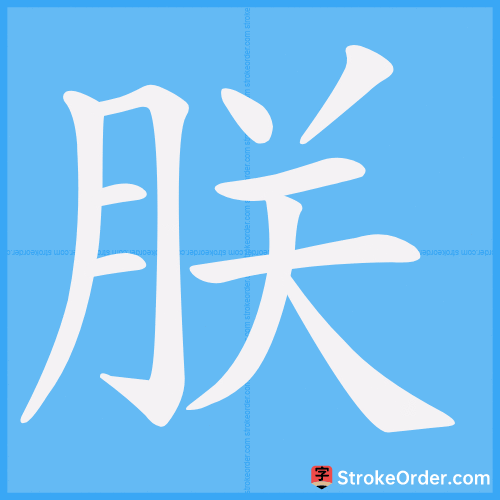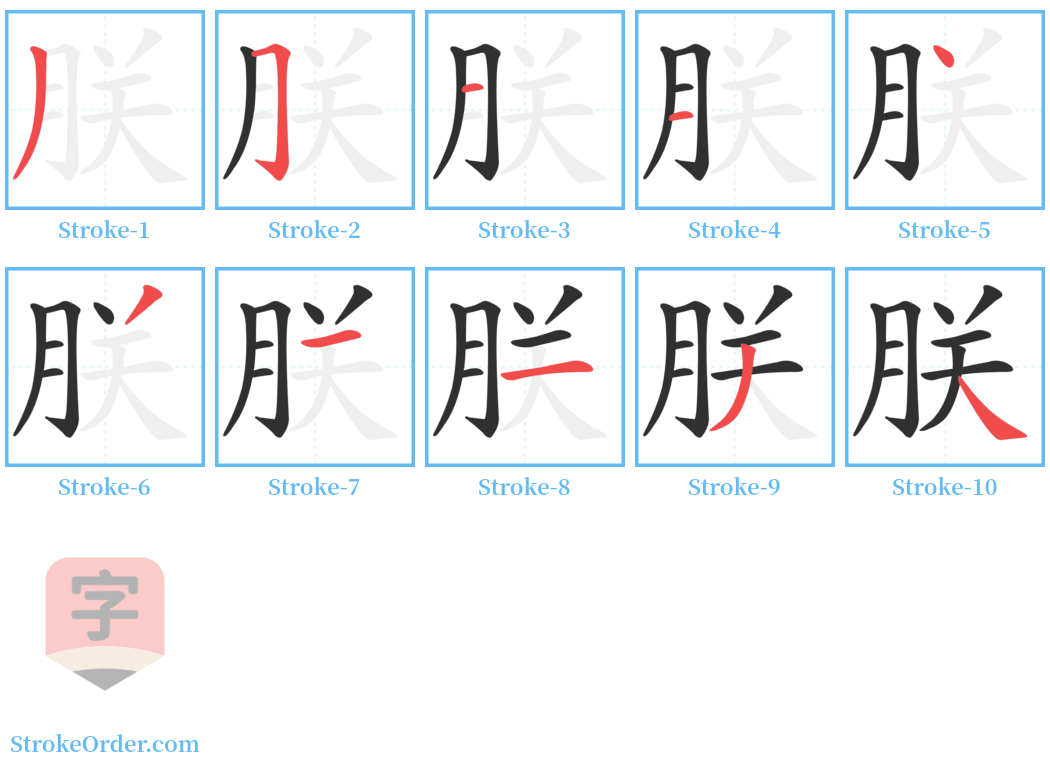朕 Stroke Order
Animated Stroke Order of 朕

Stroke Order Diagrams for 朕

Step-by-Step Handwriting Guide for 朕

Learn to Write Chinese Characters with Video Tutorials
Watch the video of writing the Chinese character "朕", learn the correct stroke order (笔顺) of the character "朕", and master the standard way of writing the character "朕".
Free Printable Handwriting Practice with Stroke Order: 朕
Printable Writing Practice Worksheet of "朕" in Portrait Orientation (Tian Zi Ge)

Printable Writing Practice Worksheet of "朕" in Landscape Orientation (Tian Zi Ge)

Information of 朕
Pinyin
zhèn
Radical
月
Strokes
10 strokes
Usage
★★★★
Definition
I / we (imperial use) / subtle
朕 [zhèn]
1. I, my. Used exclusively by emperors to refer to themselves since the time of Qin Shi Huang.
I, my. Used exclusively by emperors to refer to themselves: "朕为始皇帝" (I am the First Emperor).
2. Omen, sign.
Omen, sign: 朕兆 (omen).
---
朕 [zhèn]
1. I, my. Used by all people, regardless of status, before the Qin dynasty:
I, my. Used by all people, regardless of status, before the Qin dynasty: "朕" (I).
2. The royal "I" (used exclusively by the emperor or king to mean "I").
The royal "I" (used exclusively by the emperor or king to mean "I"). After the Qin dynasty united the six states, the son of heaven began to refer to himself as 朕.
---
引
1. Chink.
Chink.
References: "舟之缝理曰朕" (The seam of the boat is called 朕).
2. Omen; precursor.
Omen; precursor.
References: "体尽无穷,而游无朕" (The body is exhausted, yet there is no 朕).
---
引
1. I, my. Used by all people, regardless of status, before the Qin dynasty:
I, my.
References: "朕,我也" (朕 means I).
References: "汝能庸命巽朕位" (Can you manage the position as 朕?).
2. The royal "I" (used exclusively by the emperor or king to mean "I").
The royal "I".
References: "朕位几不保" (My position is barely secure).
Examples: 朕皇考 (my deceased father's name).
Input Method for 朕
Pinyin
zhen4
Wubi
eudy
Cangjie
btk
Zhengma
qugd
Four Corner
78284
Unicode
U+6715
Same Pronunciation Characters